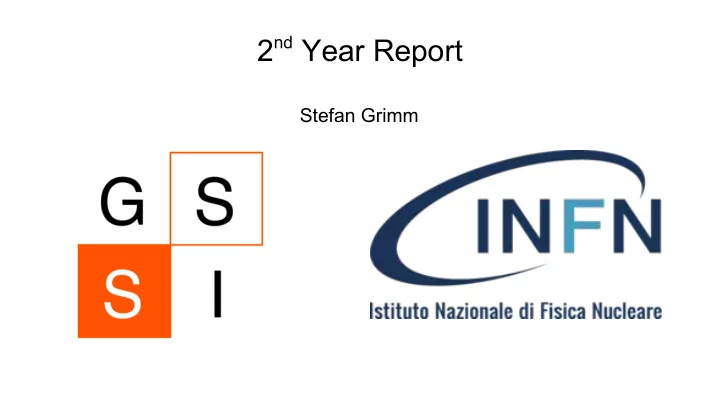

2 nd Year Report Stefan Grimm
Structure ● Introduction ● Detectors ● Fisher-matrix formalism ● Analysis framework ● Segmented Fourier Transform ● Results: Stellar-mass BBHs ● Conclusion
Introduction – GW Detection
Introduction – Multiband approach ● Parameter estimation ● Multimessenger studies ● Testing GR A. Sesana, PRL 116, 231102 (2016)
Introduction - Future Detectors Einstein Telescope (ET) Laser Interferometer Space Antenna (LISA)
Detectors ● LIGO/Virgo detector network ● ET ● LISA ● B-DECIGO - geostationary orbit ● B-DECIGO - LISA-like orbit
Fisher-matrix formalism s = h (θ)+ n ● Signal in detector ∞ a ( f ) b * ( f ) ( a ,b )= 4 ℜ ∫ df ● Noise-weighted inner product S n ( f ) 0 P ( s , θ)∝ exp (−( s − h (θ) ,s − h (θ))/ 2 ) ● Likelihood ● Expand around true source parameters F kj =(∂ k h (θ=θ 0 ) , ∂ j h (θ=θ 0 )) ● Fisher-matrix Δθ i = √ ( F − 1 ) ii ● Standard deviation SNR = √ ( h ,h ) ● SNR
Analysis framework ( 0 ) H + H x 0 ● Metric perturbation − H + H x 0 0 0 2 r ( 5 M c t c − t ) 1 / 4 5 H + = c ( 1 + cos 2 (α)) cos (ϕ( t )+ϕ c ) 2 r ( 5 M c t c − t ) 1 / 4 5 H x = c 2cos 2 (α) sin (ϕ( t )+ϕ c ) ● Rotate into detector frame T H det = R H R T H det e 1 − e 2 T H det e 2 h ( t )= e 1 ● Project onto detector arm vectors
Analysis framework ● Perform Fourier Transform ∂ i h ( t )→∂ i h ( f ) ● Compute Fisher matrix F kj =(∂ k h , ∂ j h ) ● Invert Fisher matrix Δθ i = √ ( F − 1 ) ii
Segmented Fourier Transform Choose in each segment the time resolution corresponding to the highest frequency in the segment!
Stellar-mass BBHs: detection capabilities SNR > 10 0 / 1000 13 / 1000 968 / 1000 938 / 1000 BBH population: mass spectrum is power-law with index − 1.6, 5 M solar < M BH < 60 M solar
Parameter estimates
Results ● B-DECIGO: geostationary orbit is preferable over heliocentric orbit ● Estimate of mass parameters benefits from multiband parameter estimation ● LISA: no good candidate for multiband parameter estimation of stellar-mass BBHs
Outlook ● Investigate different detector designs ● Multi-messenger studies ● Perform studies involving large statistics
Movement effects in B-DECIGO geostationary orbit heliocentric orbit
Intermediate-mass BBHs: detection capabilities SNR > 10 241 / 1000 1000 / 1000 227 / 1000
Neutron star binaries: detection capabilities SNR > 10 1 / 1000 492 / 1000 104 / 1000
Recommend
More recommend